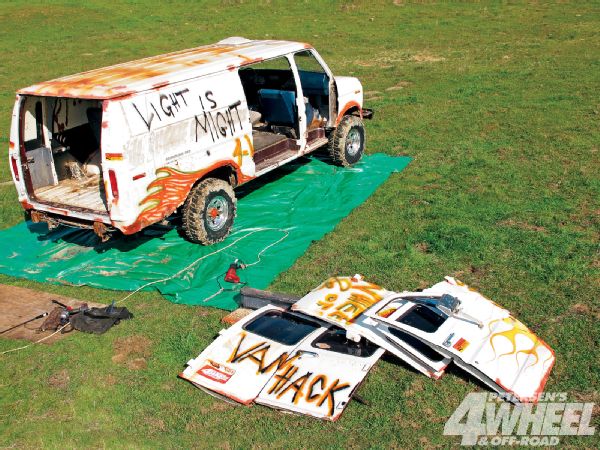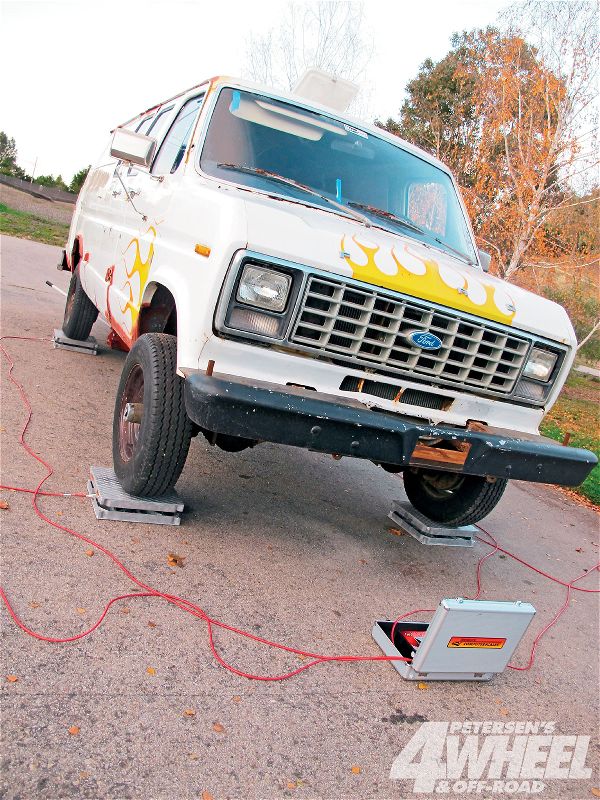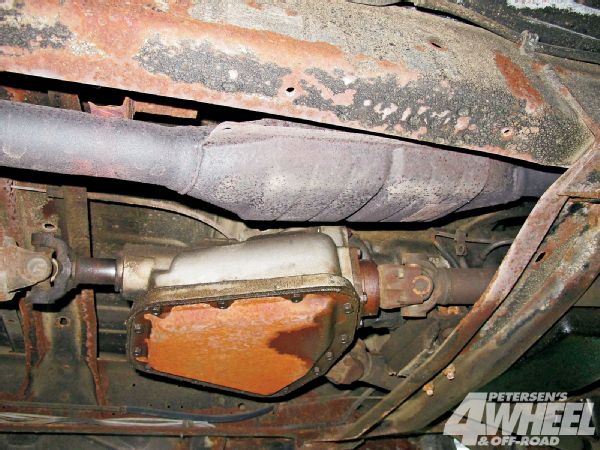
 Fred Williams
Brand Manager, Petersen’s 4Wheel & Off Road
Photographers:
Harry Wagner
Fred Williams
Brand Manager, Petersen’s 4Wheel & Off Road
Photographers:
Harry Wagner
Add a bumper, winch, big tires, running boards, a rollcage, dual batteries, recovery gear, toolbags, coolers, and spare parts to your 4x4 and you're ready to go, but you've also just given your drivetrain more work to move all that stuff over every obstacle on the trail. The argument about weight versus strength will never be decided, but if you don't think about weight when you're building your next 4x4 project then you may just be sending your truck Titanic-style to the bottom of every mud hole and hillclimb.

If you read our sister magazine Hot Rod you may have caught the story "Vette Hack" (Nov. '10), where they took a mid-'80s Corvette and cut it up just to show how a lighter vehicle can go faster around in circles. That got us thinking: If weight is an issue for going in circles, how does it affect our trail rigs that need to climb stuff, descend steep hills, and race over rough terrain? Thus Van Hack was born.
 We needed a cheap 4x4 to chop up for this study in off-road weight loss, and before we knew it we were dragging home Ivan the Off-Road Van. Ivan had lived a life of use down at the beach so rust was more than prevalent. Though it has four-wheel drive, it doesn't have low range and it's heavy (starting weight 6,002 pounds), thus it should really benefit from weight loss.
We needed a cheap 4x4 to chop up for this study in off-road weight loss, and before we knew it we were dragging home Ivan the Off-Road Van. Ivan had lived a life of use down at the beach so rust was more than prevalent. Though it has four-wheel drive, it doesn't have low range and it's heavy (starting weight 6,002 pounds), thus it should really benefit from weight loss.
The goal was simple: Build a van into an average off-roader, then take it wheeling, and after every run cut off weight and see how it affects the ability. We sourced a set of heavy-duty Computerscales from Longacre Racing for the test and some tools from Harbor Freight. The rest was all for science.
Two Front Diffs?
If these photos have you scratching your head and wondering "WTF?" you're not alone. Ivan the Off-Road Van is as oddball as they come. The basic 1-ton '79 Ford van is nothing special, but underneath is an unusual three-output transfer case that sends power to the Dana 60 rear axle and two tiny front differentials that look to be Dana 30-size but in fact are a special Dana variant.
Developed by Dana back in the '70s, this V-drive system was designed to add four-wheel drive to vans, SUVs, and even station wagons, but none of the OEMs picked it up. A few entrepreneurs put together the Vehicle Engineering and Manufacturing Company (VEMCO) out of Fort Wayne and started doing 4x4 van conversions, but the company folded in the '80s.
The van has 3.50 ring-and-pinion gears, and the front differentials each run a spool, with the actual differential unit located in the transfer case. The worst part is the lack of low-range, requiring full-throttle launches up obstacles.

The V-drive system never really caught on, but if you ever come across one of these units (found in both Ford and GM vans) you can get parts for it from Burrel's Service in Keego Harbor, Michigan, 248.682.2376.
PhotosView Slideshow
















